By W. Hays Parks

It has been my privilege over the last three decades to represent the United States in international meetings when efforts have been made by some to regulate or prohibit, among other things, certain types of military small arms ammunition. Each attempt has been unsuccessful in large measure owing to the expertise and determination the U.S. government can bring to the table to challenge arguments often unsupported by facts, law, common sense or reality. This article summarizes one such effort.
Some historical perspective is necessary. Two events germane to the story occurred roughly a century and a half ago.
In 1863, the International Committee of the Red Cross (ICRC) was founded in Geneva, Switzerland. It is an organization dedicated to protection of war victims, such as military wounded and sick, prisoners of war, and civilians in enemy hands. It has neither the expertise nor a mandate from governments (who finance its operations) to delve into the legality of weapons of war. Generally, the ICRC has declined to enter this area, as it has felt an endorsement of a weapon as “lawful” would be inconsistent with its humanitarian mission.
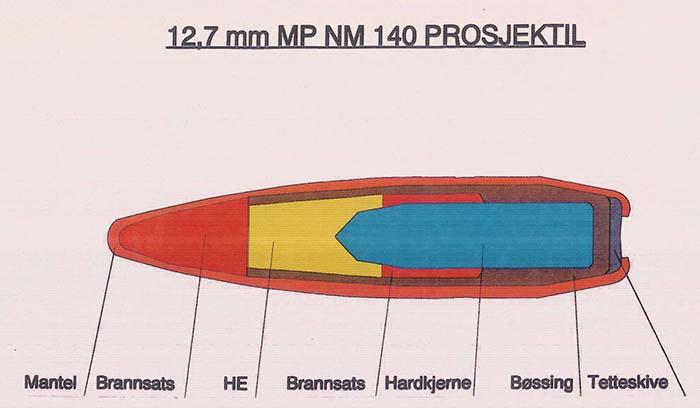
In a meeting hosted by the Russian Minister of War in St. Petersburg in 1868, representatives of seventeen governments prepared a declaration in which they agreed in wars between them to refrain from “employment by their military or naval troops of any projectile of a weight below 400 grams (6,172 grains), which is either explosive or charged with fulminating or inflammable substances.” The United States was not a participant.
A variety of explosive rifle projectiles weighing less than 400 grams saw service during the 1861-1865 US Civil War, the most numerous of which was developed by Samuel Gardiner. The Union Army purchased 75,000 .58 caliber Gardiner projectiles for its infantry forces, and 25,000 in .54 caliber for its cavalry. Confederate forces captured 10,000 Union cartridges. They soon developed a crude but effective copy, prompting protests by Union General Ulysses S. Grant following the 1863 battle at Vicksburg. In his personal memoirs, Grant wrote, “The enemy used… explosive musket balls, no doubt thinking that, bursting in the trenches, they would do some execution; but I do not remember a single case where a man was injured by a piece of one of these shells (exploding in this manner). When they were hit and the ball exploded, the wound was terrible. In these cases a solid ball would have hit as well. Their use was barbarous, because they produce increased suffering without corresponding advantage to those using them.”
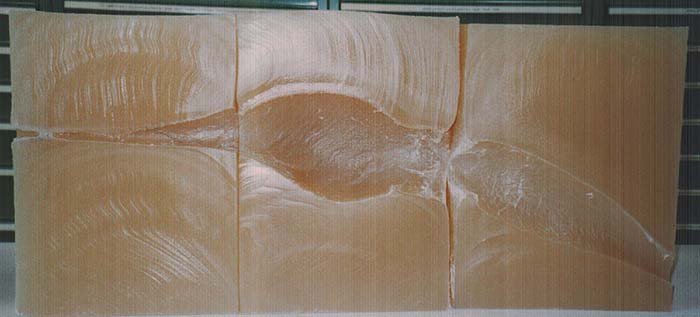
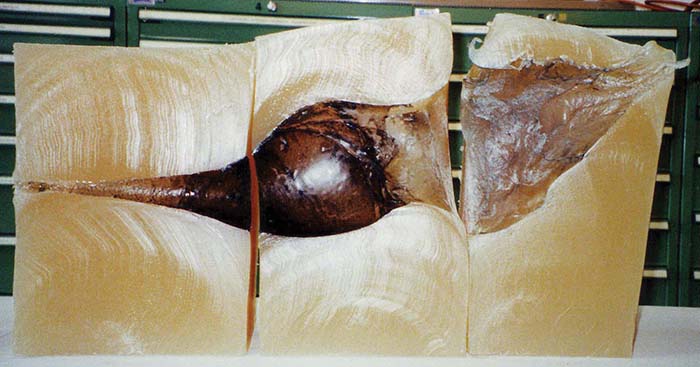
The argument offered in the last part of Grant’s statement was the issue delegates attempted to address in the St. Petersburg Declaration. While there was military value to explosive anti-materiel munitions, was there value in projectiles designed to explode upon striking a soldier? Unable to distinguish between projectiles designed to explode on impact with soft tissue and those that would explode on striking a hard surface, the delegates banned all such munitions.
Although the representatives in St. Petersburg signed the declaration on behalf of their respective governments, its practical life was short. Only two governments (Baden and Brazil) ratified or acceded to it. Then-President Ulysses Grant declined to endorse it. Technological developments and military requirements quickly outpaced St. Petersburg expressions of humanitarianism as various governments over the next half century developed and acquired projectiles at odds with the declaration’s prohibition. With World War I experience in mind, an international conference meeting in The Hague in 1923 declared, “The use of tracer, incendiary or explosive projectiles by or against aircraft is not prohibited. This provision applies equally to states which are parties to the Declaration of St. Petersburg, 1868, and to those which are not.” The 1923 Hague provision recognized that enemy troops being strafed by aircraft were likely to be struck by tracer, incendiary or explosive projectiles weighing less than 400 grams. World War II and later conflicts found tracer, incendiary and explosive small arms projectiles (or a combination thereof) in common use by all armed forces.
The history of the modern .50 caliber (12.7mm) began in the closing days of World War I. General John Pershing established a requirement for a heavy machine gun in April 1918. The Browning caliber .50 M1921 was type classified in 1921. Modified, it became the venerable Browning M2HB in the mid-1930s. Variants or other models were developed, including modern sniper models such as the Barrett M82A1 employed in Operations Desert Storm (1991) and Iraqi Freedom (2003). Between World War II and the 1980s U.S. ammunition included M2 Ball (to 1950), M33 Ball (1951), M17 tracer, M8 API (1944), and M20 APIT, with foreign counterparts.
There were ammunition performance limitations. Some U.S. and foreign 20mm and other caliber HEI would detonate on impact, without penetration, while API often penetrated through and through with little to no damage within the target. Safety concerns frustrated the desire for better high explosive-incendiary projectiles.
In the 1970s Nordic Ammunition Company in Raufoss, Norway (hereinafter Raufoss), pursued development of high explosive projectiles with fragmentation effect for use in 20mm and, subsequently, in .50 cal. for the Browning M2. The .50 cal. Raufoss Multipurpose projectile offered improved penetration and incendiary effect against attack helicopters and light armor vehicles. Accuracy of the .50 cal. Raufoss Multipurpose (1.0 MOA at 600 yards) proved better than the standard M33 ball (2.4 MOA at 600 yards).
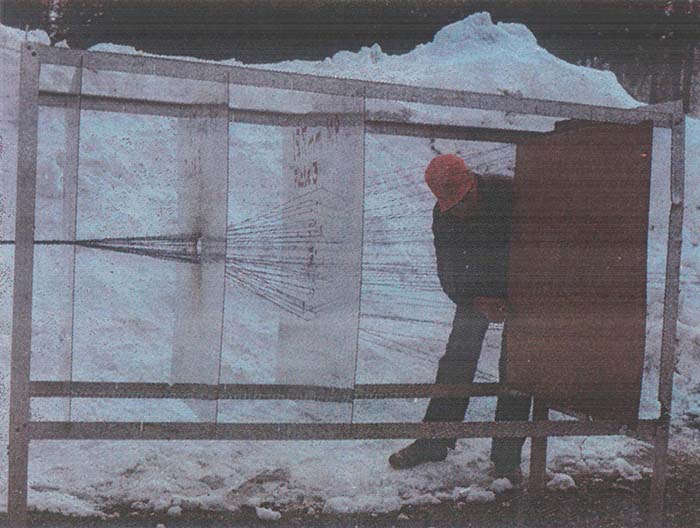
The .50 cal. Raufoss Multipurpose ammunition functions at long range after striking a duralplate of 2mm (5/64”) thickness. With a sharp angle of impact it functions against thinner plates at short range. The Raufoss projectile’s five millisecond delay action virtually eliminated the likelihood the projectile would explode when striking soft tissue as compared with its predecessors. Thus the projectile challenged by the ICRC was more “humane” (to use an ICRC term) than high-explosive, incendiary (or a combination thereof) ammunition in use by militaries for the preceding seventy years.
Weighing 671 grains with a muzzle velocity of 2,650 fps, the .50 cal. Raufoss Multi-purpose round contains explosive, an incendiary composition, a fragmenting body and tungsten hard core. When striking a hard surface such as an aircraft skin, the projectile punches its way through. The projectile’s delay element is a combination of the incendiary in the nose cap, the incendiary in the projectile body and the high explosive. When ignited, the hot incendiary gases are transferred by convective burning of the shell body, igniting the secondary incendiary mixture. This process traces its origins to the World War II U.S. .50 cal. M8 API bullet. The high explosive then is ignited by those very incendiary gases burning under high pressure to a state of deflagration, rupturing the shell body into fifteen effective incendiary fragments to attack the target’s engine and fuel system. Fragmentation is optimized to damage components inside material targets.
The Norwegian Model (NM) 140-A1 .50 cal. Raufoss Multipurpose ammunition received Navy Weapons System Explosive Safety Review Board approval on March 29, 1985. The U.S. Navy designation is Mk. 211, MOD O (Grade A) or MOD 1 (Grade B). Grade A ammunition is bulk packed without links for Navy and Marine Corps sniper use. Grade B, less accurate than Grade A, is linked for machinegun use.
The U.S. military employs the .50 cal. Raufoss round primarily for anti-materiel purposes. Given its accuracy or the inevitability of an enemy soldier walking into a bullet’s path, intentional anti-personnel use or incidental anti-personnel results are not prohibited by law or doctrine.
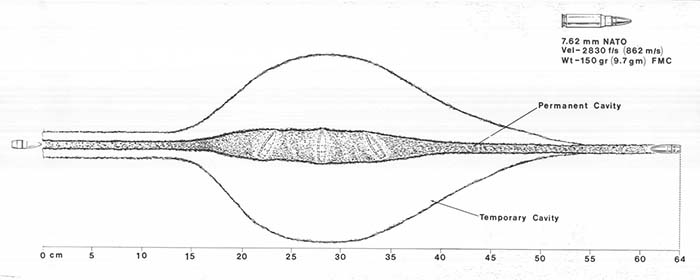
In December 1998, an ICRC representative met with a Department of State colleague and me to express ICRC concern regarding the “exploding” .50 cal. Raufoss Multipurpose Projectile, arguing that ICRC tests showed it contravened the 1868 St. Petersburg Declaration. My hasty review of ICRC test photographs raised questions as to his conclusions. As the glycerin soap blocks used as targets were cavitated but otherwise intact, the projectiles had not “exploded” as alleged. Further, the ICRC had mistaken the temporary cavity in the glycerin soap blocks for projectile “explosions.”
“Soft tissue” effect has become the accepted standard for evaluation of military small arms ammunition. Two media have been used, ten percent ordnance ballistic gelatin and glycerin soap. The former when shot at a block temperature of 4º C is the more accurate test medium. Most human tissue is elastic and has a memory. Wound ballistics tests of small caliber projectiles shot into ten per cent ballistic gelatin reveal the two areas of projectile-tissue interaction, permanent cavity and temporary cavity. The permanent cavity is proportional to the projectile size as it passes through soft tissue. The temporary cavity is transient lateral displacement of tissue, which occurs after passage of the projectile. In skeletal muscle, blood vessels and skin, this soft tissue is pushed aside, but quickly rebounds – something akin to throwing a small stone into a pond.
Glycerin soap is inelastic, and of greater density than soft tissue. Firing into glycerin soap is deceptive, as the temporary cavity deforms the soap to its largest stretched size. ICRC emphasis on the temporary cavity was misleading. Had the ICRC fired a M33 Ball projectile into glycerin soap as its control group, the wound profile would have been similar to that of the .50 cal. Raufoss Multipurpose projectile.
ICRC procedures were not consistent with standard wound ballistic testing. Shots were fired at full velocity at 100 meters into oversize glycerin soap blocks (fifty centimeters in length), a fact not disclosed by the ICRC representative in our meeting. The average adult male of military age has a thickness of thirty centimeters, while soap blocks for ballistic testing normally are thirty-five centimeters thick. Firing into three soap blocks measuring fifty centimeters thick each is equivalent to firing at five adult males standing in very close formation. Firing rounds designed primarily for engaging anti-materiel targets at 500 to 1,500 meters into glycerin soap blocks of heavier density than human soft tissue at full velocity at 100 meters is not a valid test.
Subsequently, I headed a U.S. delegation for the ICRC-hosted Meeting of Experts on “Exploding” Projectiles (an ICRC term) in Geneva, March 29-30, 1999. Participants were representatives from the four manufacturing nations (Norway, Belgium, Switzerland and U.S.). I know a fair amount about weapons and ammunition, but the most important thing I know is to have people who really are smart in this business accompany me. I had two of the best: Colonel Martin L. Fackler, MD, USA (Ret.), was a career military surgeon with Viet Nam experience. As founder and director of the U.S. Army’s Wound Ballistics Laboratory, Letterman Army Institute of Research, Presidio (1981 to 1991), he developed and established the wound ballistic methodology adopted by the United States, its NATO partners, and many other governments. He is the most knowledgeable person I know in the field of wound ballistics. Joining us was Charles F. (Chuck) Buxton (Master Gunnery Sergeant, USMC, Ret.), Supervisory Engineering Technician/NAVSEA Acquisition Design Agent, Navy Small Caliber Ammunition, Naval Weapons Center Crane.
The invited experts were unanimous in challenging the ICRC test methodology and its conclusions, noting ICRC use of the term “exploding” was technically incorrect and intentionally pejorative. The projectile does not explode, as was evident in photographs from the ICRC’s ballistic tests. Had the projectile “exploded,” the glycerin soap block into which each projectile was shot would have disintegrated. The government experts agreed a munition would be illegal were it designed to detonate on impact with soft tissue, that is, the human body. The ICRC’s argument was that were there any chance, under any circumstance, of a single projectile exploding within the human body, the ammunition was prohibited by the St. Petersburg Declaration. There was consensus that its 400-gram limitation is obsolete. The experts demanded a re-test.
The re-test was conducted at the Swiss Low Noise Ballistics Testing Facility, Thun, September 9-10, 1999, attended by the same experts from manufacturing nations. ICRC representatives attended in an observer capacity. Another error came to light in the original ICRC tests and the tests at hand. Both tests utilized 1989 and 1994 production Raufoss Multipurpose ammunition. Early projectiles loaded with PETN were overly sensitive. The main body explosive was changed to the less-sensitive RDX (also known as H-764) in 1997.
Tests were shot at 100 meters at reduced velocities to simulate shots at 500 meters. No projectile “exploded” in shots fired into glycerin soap or ten percent ballistic gel. Nor did full velocity shots fired into ten per cent ballistic gel. Re-test of the ammunition did not support the ICRC methodology, findings or assertions. The report prepared by the Swiss Ministry of Defense concluded in part: “The tests at the simulated distance of 500 [meters] which generated no deflagration or unexceptionally late deflagrations (after passing through soap blocks of greater density than human tissue and equivalent to the thickness of three average adult males) were not seen as a matter of major concern by governmental experts” (emphasis in original).
“The United States experts have indicated they do not regard tests of the projectile at full velocity at 100 meters range to have any validity, given its primary, intended ranges. Furthermore, they stated these retests supported the point of view that the 12.7mm Raufoss Multi-purpose ammunition will not deflagrate in soft tissue at intended ranges of 500 to 1,500 [meters]. This viewpoint was shared by the representatives of Belgium, Switzerland and Norway.”
One would expect this to be the end of the story. It was not. Two years later, as governments met in Geneva in a periodic meeting of States Parties to the 1980 Convention on Certain Conventional Weapons, the ICRC distributed a new document calling for new regulation of so-called “exploding bullets” based upon the 1868 St. Petersburg Declaration and its discredited original test. The document contained mischaracterizations of the original ICRC test and the 1999 re-test. It lacked critical information, such as the distinction between the temporary and permanent cavity. It failed to mention the many technical shortcomings of the original ICRC test identified by the experts. Astonishingly, the ICRC paper incorrectly claimed that fifty per cent of the shots in the two tests “exploded;” a claim wholly at odds with the tests and experts’ unanimous conclusions. The United States delegation strongly resisted the renewed ICRC effort. The meeting concluded on December 21, 2001, with the following statement by Martin Sorby, Norwegian Ministry of Foreign Affairs. “We believe that the (ICRC proposal introduced during this conference) fails to take into account some basic considerations, both on the legal and technical level regarding the 12.7mm Multipurpose ammunition. In light of the fact that we seem to have consensus among … (governments) …in our view the ammunition in question fully complies with the requirements of international law.”
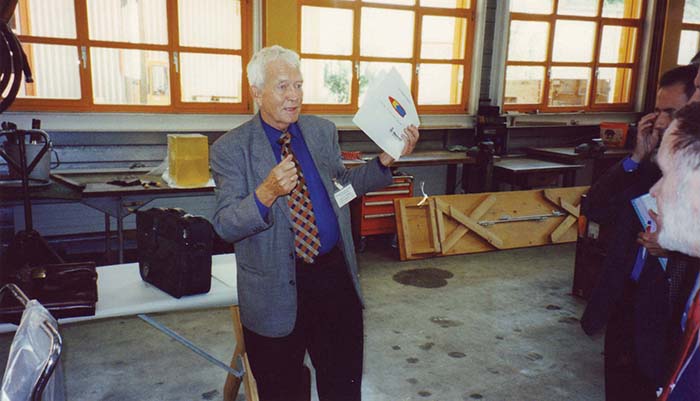
No government disagreed with Mr. Sorby’s statement.
One factual issue remained outstanding from the 1999 tests. The second and third blocks in some shots contained internal smudging. The official Swiss report suggested the possibility of late deflagration of six of the eighteen shots, and early deflagration of two shots fired at full velocity. In response to an inquiry from members of the Norwegian Parliament, the Norwegian Ministry of Defense prepared its own analysis. In 2004, Bjarne Haugstad, Director of Research, Norwegian Defence Research Institute, concluded that what the Swiss report identified as “deflagration” was instead the result of ignition of the small incendiary charge in the nose cap, releasing gases as the pyrotechnic train was initiated. This would have lead (outside the three glycerin soap blocks) to eventual deflagration of the high explosive. The gases from the small incendiary charge in the nose cap flowed back into the soap blocks. It did not in and of itself constitute deflagration of the projectile in the blocks. The report found the 1999 Swiss conclusion “to be both qualitatively and quantitatively erroneous.”
Conclusion
Governments devote considerable time, labor and effort to the development of weapons and munitions for their defense. In doing so, they also ensure their weapons and munitions are consistent with their treaty obligations. U.S. legal reviews of the Raufoss .50 cal. Multipurpose munition, conducted by the author in 1998 and 2000, confirmed its legality. Legal reviews by other governments (e.g., Australia, Belgium) agree with the U.S. interpretation. Today Raufoss .50 cal. Multipurpose ammunition is in the inventory of more than two dozen nations. The failed challenge by the International Committee of the Red Cross to the Raufoss .50 cal. Multipurpose cartridge was based upon flawed test methodology, assumptions and arguments of history, fact and law. It was defeated through a determined effort by the U.S. and other governments to identify and refute the errors contained in the challenge.
(The author is a retired US Marine Corps Colonel with four decades military and federal service. He is writing in his personal capacity. Additionally, the author is indebted to Martin L. Fackler, J. Buford Boone III, Charles F. (Chuck) Buxton, Charles T. (Chuck) Marsh, and Keith R. Pagel for their assistance in preparation of this article.)
| This article first appeared in Small Arms Review V10N1 (October 2006) |










